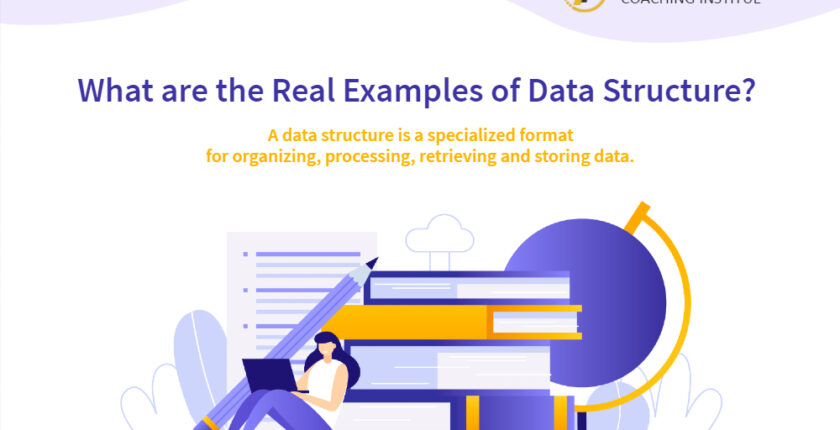Blog
TCCI > Blog > Data Structure at TCCI > What are the Real Examples of Data Structure? tccicomputercoaching.com
What are the Real Examples of Data Structure? tccicomputercoaching.com
- July 29, 2020
- Posted by: Riddhi Dhandha
- Category: Data Structure at TCCI
No Comments

A data structure is a specialized format for organizing, processing, retrieving and storing data.
Following are the real Examples of Data Structure:
- Arrays : It is most used data structure. It is used in every possible situation where you need to gather similar objects at one place. Simple Example can be collection of all the book titles in a Library Management systems
- Structures : They are Not Part of Data Structures by them self’s But rather they are programming constructs through which you can build these Data structures. Most Important Use of a Structure is Gathering of Data Bits which are Similar at one place in the memory and treat them as one single entity. Taking the same Library Management System all the Details Regarding To a Book (Like Name, Author etc) can be placed at one place in memory using a structure
- Linked Lists : They Can Work in most of the places Arrays work. But Difference in usage depends upon two choices we make when we design a systems. Those choices are 1) is Total Number of Elements in the Array Changes Frequently 2) What Run Time Efficiency You need . if Total Number of Elements in Array changes often the probably Linked list is better for that application as it is less costly to add and remove nodes in a Linked List. If you need a run time efficiency O(1) you should always go for an array as it will have every fast access speeds
- Tree :
- PDF is a tree based format. It has a rootnode followed by a catalogue node(these are often the same) followed by a pages node which has several child page Producers/consumers often use a balanced tree implementation to store a document in memory.
- Your file system is a tree structure. So check out the source to any free file system.
- Looking at any of the Data warehousing products you’ll see clever ways of storing and drilling into tree shaped dimensions. You get a tree structure for location (country, region, state county, town, etc) and time (Year, Month, Day, Hour). Those two dimensions are common across many domains, but much other real world data also lends itself to the tree.
- Graphs : good example of graphs is a Map application which will give you shortest path from a point a to point b. this application may be using nodes to represent different points in the map and applying a Dijkstra’s algorithm to find shortest path.
To learn Data Strucuture at TCCI
Call us @ 9825618292
Visit us @ www.tccicomputercoaching.com
